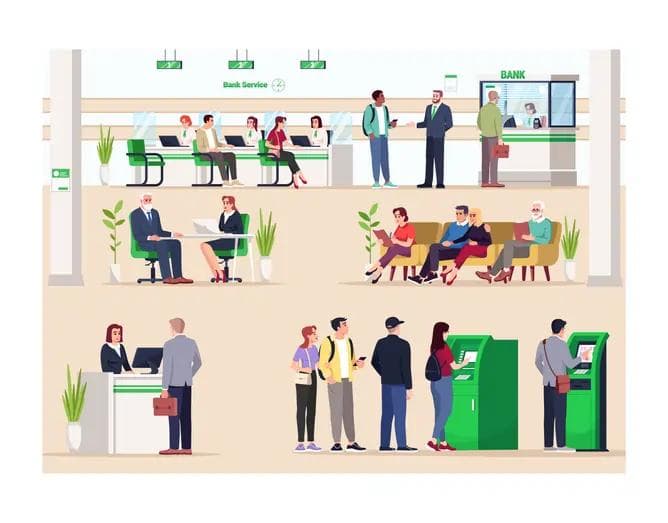Banks and fintechs are done competing: How their partnerships will expand in 2023
Banks and fintechs are done competing: How their partnerships will expand in 2023
Published by Jessica Weisman-Pitts
Posted on November 14, 2022

Published by Jessica Weisman-Pitts
Posted on November 14, 2022

Interview from Vijay Sondhi, CEO of NMI
How will the switch of fintechs and banks being rivals to partners, such as with JP Morgan’s acquisition of Renovite, accelerate in 2023?
As more customers seek digital, instant payment options, many banks and fintechs have looked to work together to offer the most complete solution. These partnerships are relatively new for the space, as banks and fintechs previously sought to compete with each other, but now the relationship is shifting toward that of partners instead of adversaries. Fintechs previously sought to disrupt the financial services space by capturing payment data at the POS, helping fintechs know exactly how much credit to offer businesses. These tailored services made them a more attractive option than banks. Now, as regulations become clearer, many fintechs are turning to banks to help them navigate the complicated issue of compliance. With organizations like the Consumer Financial Protection Bureau (CFPB) further looking to increase regulations, bank and fintech partnerships will be critical in 2023 and beyond.
With 82% of financial services companies planning to increase fintech partnerships in the next three to five years, the theme of fintechs and banks switching from rivals to partners will accelerate in 2023. This will allow banks to build out their own payments infrastructure to accept payments more quickly and respond to customer demand for easy, enjoyable transaction experiences. Additionally, fintechs can help banks expand their customer base by providing banks with the latest payment offerings so they can provide innovative payment experiences. These partnerships will also allow banks to better compete with and get the upper hand on the Stripes and Blocks of the world.
How will bank-fintech partnerships create joint offerings that are more user-friendly and better equipped to meet customers’ and merchants’ ever-changing needs?
As merchant and customer demand for faster onboarding and processing increases, bank-fintech partnerships will allow banks to provide flexible technology solutions to merchants. This will help banks meet the financial needs of their customers while offering an easy way to provide the most complete solution possible. For instance, Marqeta recently announced its new banking products to deepen its relationships with customers such as Coinbase, Uber and DoorDash. These banking as a service (BaaS) products offer new APIs that allow customers to create demand deposit accounts and allow them to access early-pay capabilities and instant funding. Additionally, Adyen recently announced two new BaaS products as well. Adyen’s products focus on embedded finance and allow customers instant access to things like business bank accounts and cash advances. Both Marqueta and Adyen’s recent announcements are examples of new products that are specifically designed to meet customers’ evolving needs and offer the best customer experience possible. BaaS and embedded finance are two spaces where customers are looking for new and innovative solutions, so these services could be the centerpiece of many bank-fintech partnerships in the year to come, as banks have the infrastructure and fintechs have the technology to make these services quickly available to customers.
Marqueta and Adyen are just two of the many big-name financial institutions in the rush to enter the BaaS space. Fintechs’ ability to move quickly and create new offerings will benefit banks allowing them to respond to the ever-changing needs of merchants and consumers while ensuring their customers can process payments however they prefer.
What are your predictions for how bank-fintech partnerships will evolve in 2023?
Bank-fintech partnerships aren’t going anywhere in 2023. Banks and fintechs separately can only provide a handful of solutions to their customers, but together they will be able to take on big tech companies like Apple who are entering banking and payments services. If banks want to stay competitive, they’ll need to offer modern digital merchant services. Since fintechs already have these offerings that are delivering on what they know consumers and merchants want and need, banks can benefit from these technology developments by partnering with a fintech company to keep up with these demands.
In 2023, we will also see an uptick in regulations, which will have implications for both fintechs and banks, and will evolve the way the two work together. With BaaS on the rise, digital banks and third parties are increasingly connecting with banks through APIs to build additional offerings on top of the bank providers’ regulated infrastructures. While this opens the door for new financial services to be added to banks’ existing infrastructures, it also brings about new and different risks. And with these risks, more regulation will be needed to clarify procedures to ensure legacy bank systems aren’t left vulnerable.
Explore more articles in the Banking category











